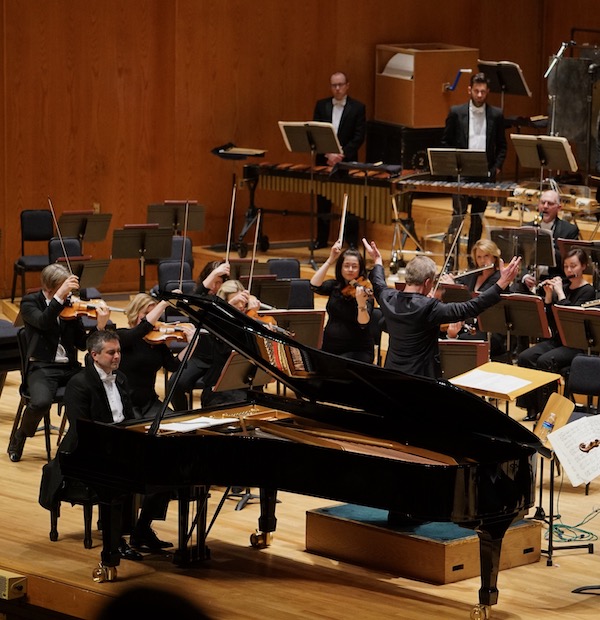A pianist stumbles in Schumann but Utah Symphony soars with Beethoven and Messiaen

This weekend’s Utah Symphony program juxtaposes two icons of the 19th century — Schumann and Beethoven — with one of the leading lights of the 20th, Olivier Messiaen.
Schumann is represented by his Piano Concerto, a staple of any pianist’s repertoire. Playing it this weekend in Abravanel Hall is the Swiss pianist Francesco Piemontesi, making his Utah Symphony debut. While Piemontesi is no doubt a fine pianist, and Schumann’s concerto certainly gives the soloist room to shine, his interpretation Friday night left much to be desired.
In the opening movement Schumann makes good use of shifting tempos, textures and dynamics to give the emotional content of the music greater scope and definition. But the contrasts were too stark and abrupt in Piemontesi’s account. In the softer passages, the 37-year-old pianist slowed the tempos down to the point of lethargy. And the forte sections burst out jarringly. It was almost as if Piemontesi, and Thierry Fischer, who was on the podium, were sending up the finely crafted romanticism that flows through this movement. And Fischer certainly was on the same page as the pianist, so it was, in its way, an effective collaboration on a rather odd interpretation.
The same was true in the closing movement: Piemontesi tried to summon passion but ended up sounding muddled and undefined. More successful was the brief central Intermezzo where both Piemontesi and Fischer captured the emotions Schumann expressed with nuanced expressions and delicate lyricism.
The Beethoven on the program this weekend is his Symphony No. 7 in A major, which Wagner called “the apotheosis of the dance.” In this work, Beethoven lets his hair down and has a grand time exploiting the possibilities of rhythmic motives and patterns. And Fischer captured the jovial nature of the music and coaxed vibrant and dynamic playing from the orchestra.
Fischer’s brisk tempo in the opening movement underscored its exuberance, which the orchestra communicated with a precision and crisp articulation that carried over into the second movement. This movement, in A minor, holds to the work’s overall rhythmic flow but is a bit more subdued than its counterparts. Fischer’s reading was understated, with carefully crafted crescendos and dynamic expressions that let the music flow naturally.
The last two movements reprise the exuberance of the first and, in Fischer’s hands, both were high-energy and fueled with a rhythmic vitality punctuated by the orchestra’s clarity of sound.
Opening each half of the concert was a movement from Messiaen’s 1974 work Des canyons aux étoiles. Both movements were preceded by images, projected on a screen behind the orchestra, of the southern Utah desert landscapes that inspired this work.
The movements paint a vibrant portrait of two of the state’s most famous areas, “Bryce Canyon and the Red-Orange Rocks” and “Cedar Breaks and the Git of Awe.” With his striking tonal imagery and remarkable orchestral colors, Messiaen created a soundscape that imparts the wonders of the nature found there.
Fischer’s readings of both movements didn’t miss anything of the minutest details of the score, and captured the depth and intensity of the music. The ensemble played with finely honed expressions and delivery, and of particular note was pianist Jason Hardink’s outstanding solo work in “Bryce Canyon and the Red-Orange Rocks.”
The program will be repeated 5:30 p.m. Saturday in Abravanel Hall. utahsymphony.org; 801-355-2787.